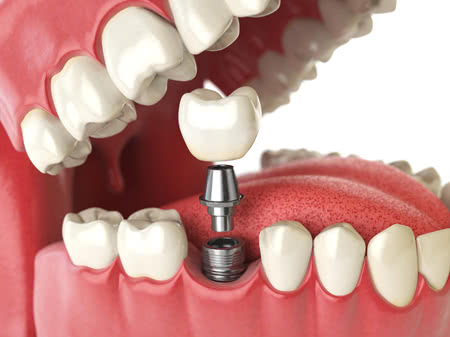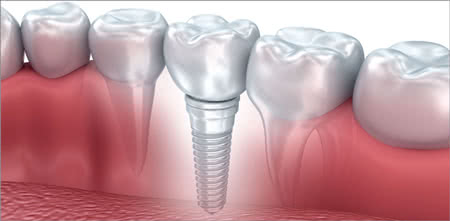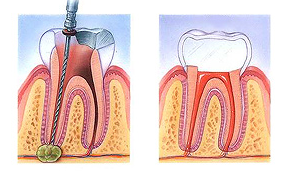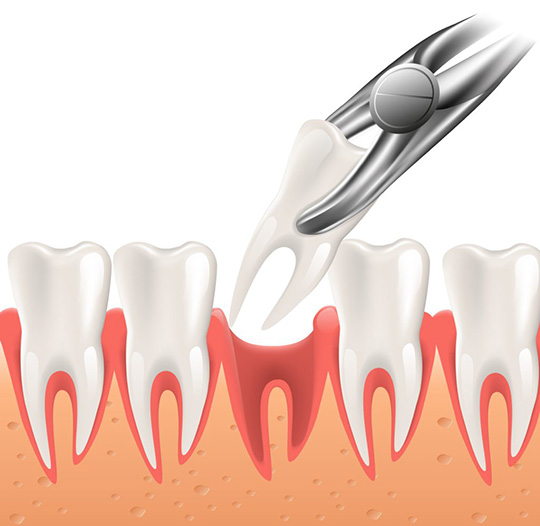Restorative Dentistry in Denver, CO
Restorative dentistry serves to restore teeth that may have been damaged through common oral health problems or more serious dental issues. Tooth decay, wear, and damage are a natural result from the intense workout and bacterial influx our mouths get every day. Our skilled professionals can restore your damaged teeth with natural-looking materials, like composite resin fillings and porcelain crowns, inlays, and onlays. This means that you can retain an all-white smile. The benefit of restorative dentistry is that many of the procedures overlap with cosmetic dentistry procedures allowing for modern restorations that are designed to improve the look and feel of your smile and enhance your overall appearance. Often time’s restorative dental procedures are a result of a patient who either has overlooked the necessity of routine dental care or has a dental problem that was not visible by the naked eye. This is why we recommend visiting our dental office every six months to check for signs of tooth decay, gum disease or other dental health issues that may be prevented before they become costly or more serious. Below is a list of the common restorative dentistry procedures that we provide to help you with issues that may affect your teeth, gums or smile.

Dental crowns and bridges are custom-fitted tooth prosthetics that are used to replace or restore damaged or missing teeth.
Crowns – also known as caps – are fixed over the surfaces of natural tooth structures or dental implants.
Bridges are used to fill in the gaps left by missing teeth and are anchored in place by the natural teeth or crowns nearest the empty space.
Both crowns and bridges are non-removable and must be cemented in place by a licensed dentist. Patients who get crown or bridges to restore their smiles achieve both the function and appearance of natural, healthy teeth.
Crowns
Dental decay, oral infections, or even accidents can leave you with mishappened teeth and take away the confidence that you once had in your smile. Making corrections to these fractured or decayed teeth is critical not only for appearance, but also for everyday functions such as speaking or eating. Dental crowns or bridges, depending on your specific situation, can bring your smile back to its highest potential.
Crowns are a cosmetic restoration used to strengthen a tooth or improve its appearance. Crowns are most often used for teeth that are broken, worn, or partially destroyed by tooth decay.
Crowns are “cemented” or “bonded” onto an existing tooth and fully cover the portion of your tooth above the gum line. In effect, the crown becomes your tooth’s new outer surface. Crowns can be made from many materials, which are usually fabricated using indirect methods. Porcelain crowns are most often preferred because they mimic the translucency of natural teeth and are very strong.
Crowns or onlays (partial crowns) are needed when there is insufficient tooth strength remaining to hold a filling. Unlike fillings, which apply the restorative material directly into your mouth, a crown is fabricated away from your mouth. Your crown may be created in a single visit using our CEREC technology or created in a lab from your unique tooth impression, which allows a dental laboratory technician to examine all aspects of your bite and jaw movements. Your crown is then sculpted just for you so that your bite and jaw movements function normally once the crown is placed. The most common method of crowning a tooth involves using a dental impression of a prepared tooth by a dentist to fabricate the crown outside of the mouth.
Made from metal amalgam, white composite, or white porcelain, dental crowns fit directly over a damaged tooth, bringing it back to its original form again. Crowns are essentially a cap for your mishappened tooth. Crowns help to:
- Restore fractured or broken teeth
- Hold pieces of a broken tooth together
- Restores a severely decayed tooth
On top of everything else, dental crowns also play a major role in dental bridgework.
At Governor’s Park Dental Group, we use the latest in technology from Cerec to give us the ability to make crowns onsite in one day in most cases.
Bridges
A bridge may be used to replace missing teeth, help maintain the shape of your face, and alleviate stress on your bite.
A bridge replaces missing teeth with artificial teeth, looks great, and literally bridges the gap where one or more teeth may have been. Your bridge can be made from gold, alloys, porcelain, or a combination of these materials, and is bonded or cemented onto surrounding teeth for support. Dental bridges are not removable, but are permanently cemented into the patient’s mouth.
Bridgework is similar to dental crown placement. Most of the time, two visits are required. The first appointment involves removing leftover enamel, making room for the bridge. Your dentist will also go through a thorough exam so a personalized bridge can be constructed. The second visit entails the placement of the newly made bridge, cemented it into place. Essentially, this procedure “bridges the gap” in a patient’s mouth. If you are receiving bridgework, expect to leave with a brand new, beautiful smile.
The success of any bridge depends on its foundation — the other teeth, gums, or bone to which it is attached. Therefore, it’s very important to keep your existing teeth, gums, and jaw healthy and strong.
When natural teeth are removed many problems can occur. The remaining teeth drift, rotate and become crooked. An improper bite can develop, making it difficult to chew food properly. Spaces and gaps between teeth may also cause problems with speech and lack of self-esteem. People who have teeth replaced acquire a better ability to chew food and eat properly, renewed confidence while speaking, and better self-esteem.
At Governor’s Park Dental Group, we complete restorative work on existing implants. If a new implant placement is needed, we will refer you to one of our specialists, and work closely with them to ensure the best quality implant for you!
Many don’t realize that the consequences of missing or damaged teeth are more than just cosmetic. Left unrepaired, this oral health issue can cause serious problems that include:
- Inability to speak and chew normally
- Bone loss
- Jaw pain and infection
- Gum disease (which can lead to problems like heart attack and stroke)
An implant is a synthetic tooth root in the shape of a post that is surgically placed into the jawbone. The “root” is usually made of titanium: the same material used in many replacement hips and knees, and a metal that is well-suited to pairing with human bone. A replacement tooth is then fixed to the post. The tooth can be either permanently attached or removable. Permanent teeth are more stable and feel more like natural teeth. Implants are composted of three part: the titanium implant that replaces the root, the abutment, which is a post that connects the implant to the crown, and the tooth-colored crown on the top.
The ideal candidate for implants is a non-smoker who has good oral health, including a sufficient amount of bone in the jaw, and healthy gums with no sign of gum disease.
Don’t let missing or badly damaged teeth hurt your confidence or your health.
We will help you understand why high-tech dental implants may be the best solution.
Our dentist cares about your oral health and well being and work with only the best implant specialists and will also provide follow up care for your implant to ensure you have the best care possible.
Please call our office if you have any questions about dental implants or want us to give you a referral to one of the specialists we work with. We will be happy to discuss your options with you.




Whether lost due to decay, accident, injury, or just the natural aging process, missing teeth affect the way you look and feel. Even worse, they can lead to lifelong health problems, including an increased risk of gum disease and irreversible bone loss in the jaw.
At Governor’s Park Dental Group, we offer high-tech and custom-made dentures designed to look great and restore the health and function of your smile!
Talk to our dentist today if you’re…
- Missing 1 or more teeth in your mouth
- Unhappy with the appearance of your smile
- Having trouble eating or speaking due to missing teeth
- Unhappy with your current denture
A confident, radiant smile is always important, but it’s especially important for patients wearing dentures. Everyone has a different and unique mouth structure. For that reason we create customized dentures for every patient, ensuring a natural and aesthetically pleasing look.
What are Dentures?
If you have missing teeth, dentures could be your ticket back to a beautiful smile. Dentures are natural-looking, removable teeth that are attached to an aesthetically pleasing frame. They are a great solution for those who have lost their teeth from gum disease, tooth decay, or an accident. There are two different types of dentures; full and partial.
Full Dentures – Complete and Immediate
Complete dentures, also known as conventional dentures, are given to those who have had all of their teeth removed. Conventional full dentures can be placed into the patient’s mouth once the gums have fully healed. Gums may need to heal after tooth extraction or any physical injury to the gums. Healing can take anywhere from 8 to 12 weeks.
Immediate dentures are different in that the patient does not have to go without teeth for a period of time. They are made in advance and can be placed into the patient’s mouth right away. As the mouth heals, partial adjustments may be required to the immediate dentures.
Dentures can also be supported by implants, in which case they are fixed to the jawbone and not removable by the patient.
Partial Dentures
Partial dentures are used when the patient has lost only some teeth. They are replacement teeth attached to a naturally pink gum base. Because the teeth gaps may be in different locations, this removable denture is typically connected by a metal framework. Partial dentures are crucial because they help to fill in teeth gaps as well as prevent other teeth from shifting positions. The partial dentures will be customized for the patient’s mouth structure.
Dentures Procedure- How it works
Initial Appointment: Your first appointment includes a thorough examination of your gums and teeth to see if you are a good candidate for dentures.
Mold Replica: In order to create dentures that are a perfect fit for your mouth, a mold replica will be created using dental putty. This mold is then sent to a professional laboratory for denture creation.
Fitting Appointment: Once your dentures are ready for use, you will come in for a second visit to get your dentures fitted and adjusted as needed.
In the past, if you had a tooth with a diseased nerve, you’d probably lose that tooth. Now, with “root canal therapy,” your tooth can be saved. When a tooth is cracked or has a deep cavity, bacteria can enter the pulp tissue and germs can cause an infection inside the tooth. If left untreated, an abscess may form. If the infected tissue is not removed, pain and swelling can result. This can injure your jawbones and be harmful to your overall health.
Root canal therapy involves one to three visits. During treatment, your general dentist or endodontist removes the affected tissue. Next, the interior of the tooth will be cleaned and sealed. Finally, the tooth is filled with a dental composite. If your tooth has extensive decay, your dentist may suggest placing a crown to strengthen and protect the tooth from breaking. As long as you continue to care for your teeth and gums with regular brushing, flossing, and checkups, your restored tooth can last a lifetime.
What is a root canal procedure?
Tooth decay can progress down into the pulp. When this happens, the pulp can become infected. Infection of the pulp can be very painful and can also deteriorate into an abscessed tooth when infection and swelling develops in the tissues around or beneath the tooth. When the pulp becomes infected or the tooth becomes abscessed, it is necessary to perform a root canal.
Why do I feel pain?
When the pulp becomes infected due to a deep cavity or fracture, bacteria can seep in. When there has been an injury due to trauma, the pulp can die. Damaged or dead pulp causes increased blood flow, pressure, and cellular activity. Pain in the tooth is commonly felt when biting down or chewing, and eating or drinking hot and/or cold foods and beverages.
Why do I need root canal therapy?
The tooth will not heal by itself. Without treatment, the infection will spread. The bone around the tooth will begin to degenerate, and the tooth may fall out. Pain usually worsens until one is forced to seek emergency dental attention. The only alternative is extraction of the tooth, which can cause the surrounding teeth to shift, resulting in a bad bite. Though an extraction is cheaper, the space left behind will require an implant or a bridge, which can be more expensive than root canal therapy. If you have the choice, it’s always best to keep your original teeth.
What are the risks and complications with root canal therapy?
More than 95 percent of root canal therapies are successful. However, sometimes a case needs to be redone due to diseased canal offshoots that went undetected, or the fracturing of the canal filling. More commonly, a root canal therapy will fail altogether, marked by the return of pain.
What happens after root canal therapy?
Once root canal therapy is completed, the endodontist will refer the patient back to our office for the permanent restoration on the tooth. A temporary filling was placed immediately following the root canal therapy and will need to be replaced with a permanent filling or crown and build up. A crown will be necessary on all posterior teeth to properly protect the root canal- treated tooth from fracturing. Front teeth can typically be restored with a filling, however a crown may be necessary in some cases. Your dentist will determine the best choice for your individual needs.
How long will the restored tooth last?
Your restored tooth could last a lifetime, if you continue to care for your teeth and gums. However, regular checkups are necessary. As long as the root(s) of a treated tooth are nourished by the tissues around it, your tooth will remain healthy.
How does root canal therapy save my tooth?

- An opening is made through the crown of the tooth into the pulp chamber.
- The pulp is removed, and the root canals are cleaned, enlarged and shaped.
- Medications may be put in the pulp chamber and root canal(s) to help get rid of germs and prevent infection.
- A temporary filling will be placed in the crown opening to protect the tooth between dental visits. Your dentist may leave the tooth open for a few days to drain. You might also be given medicine to help control infection that may have spread beyond the tooth.
- The temporary filling is removed and the pulp chamber and root canal(s) are cleaned and filled.
- In the final step, a gold or porcelain crown is usually placed over the tooth.
An infected tooth is a serious condition and must be treated promptly to avoid tooth loss and the spreading of infection to other teeth. If you are concerned about an infected or abscessed tooth, we urge you to call Governor’s Park Dental Group today.
If you’re embarrassed about your smile because of decay or dark fillings in your teeth, you may be a good candidate for composite resins. A silicon dioxide-filled, tooth-colored plastic mixture, composite resins can restore teeth to an attractive, healthy state. Composite resins represent several advantages over traditional silver, or amalgam, fillings. Because composite resins are not made of metal, we can blend and mix shades to find the perfect color to match your natural teeth. This means only you and your Denver dentist will know you have fillings. Another advantage is that the tooth/composite bond actually supports the remaining tooth structure, deterring breakage and insulating against temperature changes. Medium and small composites can last 7 to 10 years – that’s as long as the tried and true amalgams. Best of all, composite resins allow us to keep more of your natural tooth structure intact than amalgams. We believe in conservative dentistry – the more natural tooth structure you keep, the better teeth you’ll likely have in the future.
Some patients experience mild and temporary post-placement sensitivity from composite resin fillings. The only caution we usually mention is that coffee, tea, and other staining foods and beverages may discolor your composites unless you ask to have them coated with a clear plastic sealant.

When patients experience extreme sensitivity, pain from a broken tooth, or are suffering from advanced periodontal disease, your dentist could recommend that you have a tooth extracted. During a simple extraction, the dentist can safely remove the affected tooth without the need for major surgery.
Reasons for Tooth Extractions
There are numerous situations in which a simple extraction is needed. Extractions are typically performed because of an active problem such as pain, swelling, decay, infection, as a preventative measure to avoid serious problems in the future, or to prepare your for another cosmetic or restorative procedure.
Common reasons for tooth extractions include:
- Advanced periodontal disease that has loosened the roots of your tooth
- Extra teeth or baby teeth that impede adult teeth
- Preparing a patient for orthodontic treatment
- Removing a fractured or malformed tooth
- Severe tooth decay which cannot be remedied with root canal therapy
- Removal of Wisdom Teeth
How Tooth Extractions Are Done
Although we often hope to avoid the extraction of a tooth, sometimes it is necessary if the tooth cannot be saved by a root canal or other dental procedure.
Extractions are usually performed under local anesthesia. For those with high anxiety or prefer to be sedated for this type of procedure, we also offer sedation dentistry.
Once the tooth has been pulled, a blood clot will form in the socket. The dentist will place a few stitches (usually dissolvable sutures) to close the gums over the extraction site. The dentist will pack a gauze pad into the socket and have you bite down on it. This will help stop the bleeding and help the clot form. It’s important to let the clot heal and form properly. If the blood clot does not form properly, you can run the risk of a painful condition called dry socket.
Home Care Instructions for Tooth Extractions
It normally takes several days to recover from an extraction. You will be placed on a soft food diet for several days, need rest and limit strenuous activity, and refrain from smoking, rinsing, and using straws.
